#the medieval myths
Explore tagged Tumblr posts
Text

#I just really liked this cover and the colors used#the medieval myths#norma lorre goodrich#medieval#mythology#books#booklr#reading#bookish#bibliophile#book photos
39 notes
·
View notes
Text
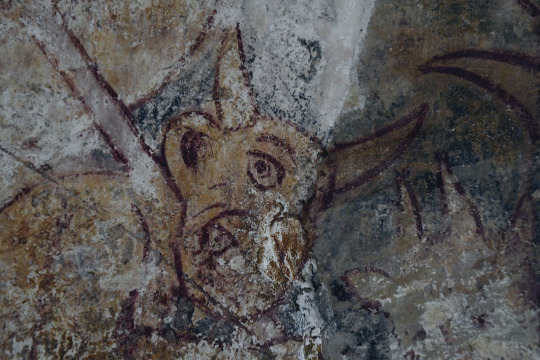
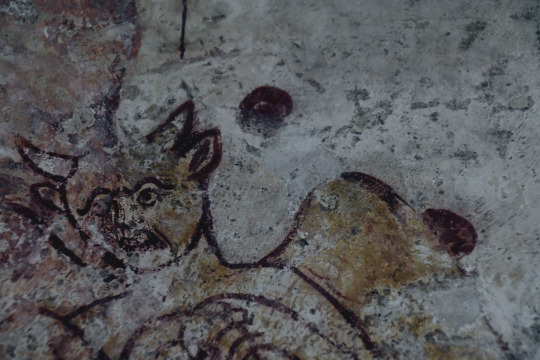
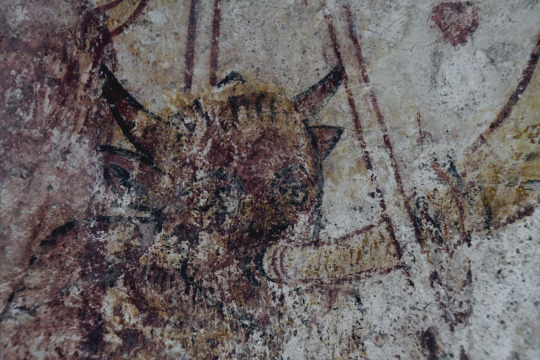
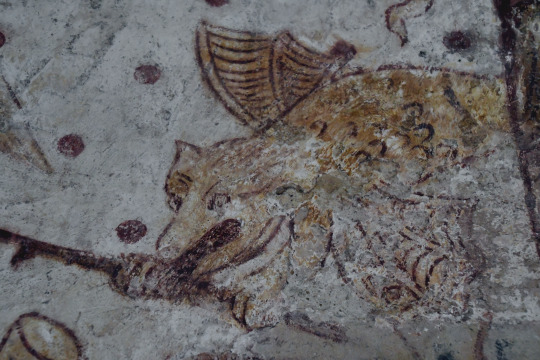
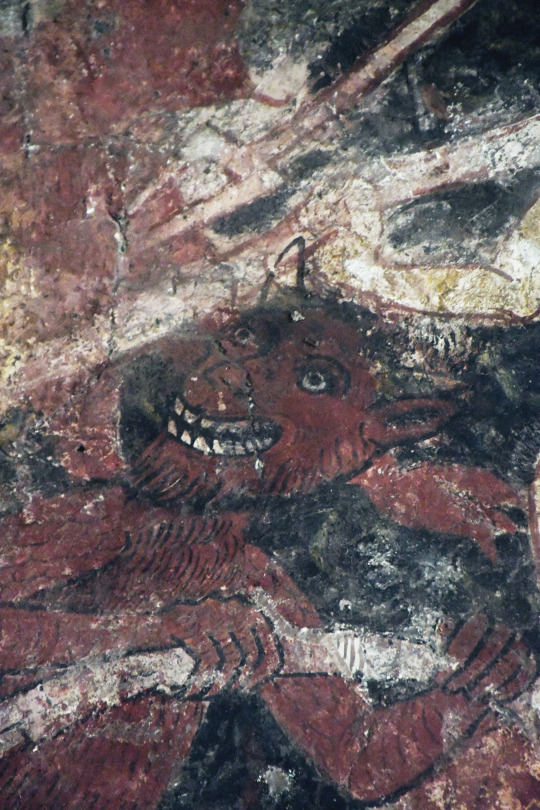
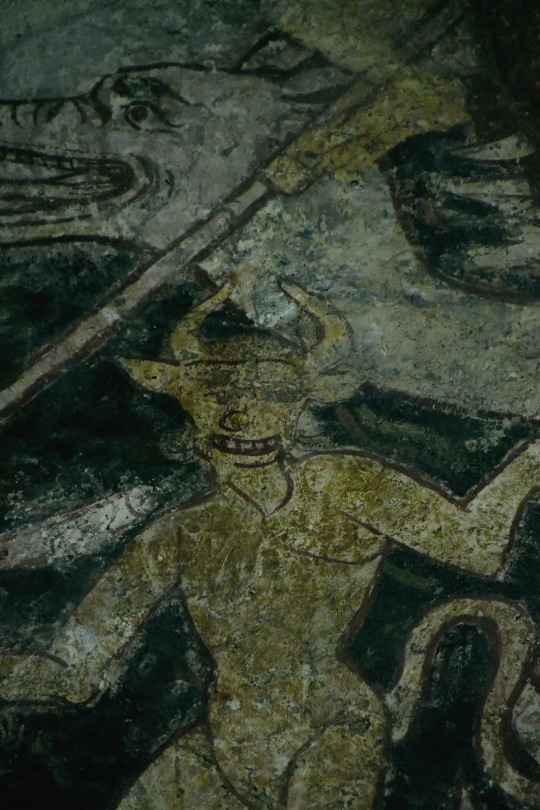
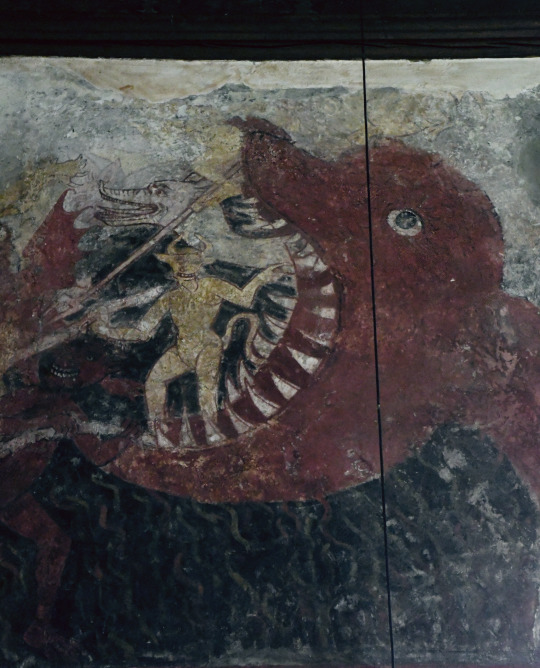
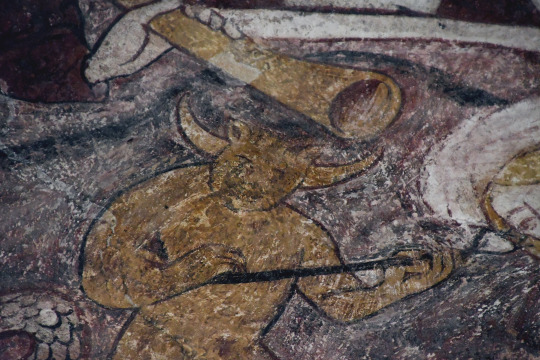
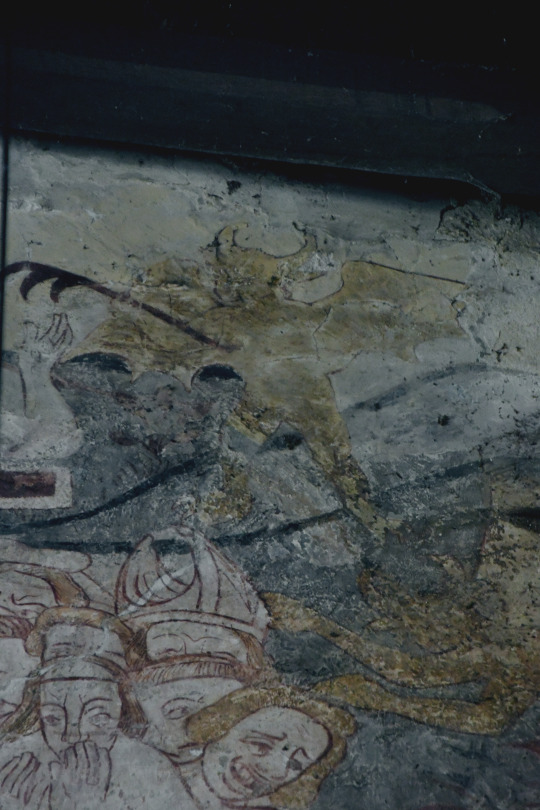
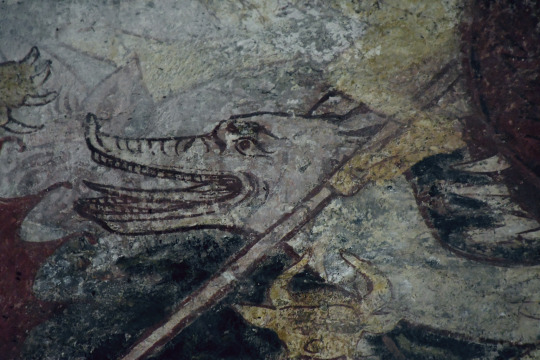
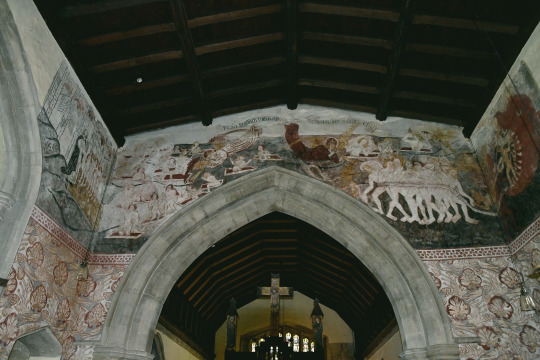
Devils and the Mouth of Hell details from South Leigh doom painting 15th C- South Leigh, UK
#occult#gothic#folklore#memento mori#goth#folk horror#skull#dead#wall art#painting#doom painting#fresco#medieval art#art history#medieval#devil#demon#satan#monster#hell#hell mouth#mouth of hell#horror#myth#legend#creepy#macabre#goth aesthetic#goth vibes#goth goth
2K notes
·
View notes
Text

Communities are a new way to connect with the people on Tumblr who care about the things you care about! Browse Communities to find the perfect one for your interests or create a new one and invite your friends and mutuals!
263 notes
·
View notes
Text

underworld ouppy :)
commissions are open! saving for top surgery
#cerberus#greek mythology#greek myth art#hades#persephone#medieval#medieval art#artists on tumblr#commissions open#illustration#csp art#greek gods#ancient greek#dog#dog art#trans artist
792 notes
·
View notes
Text

The manticore is an example of a human/animal hybrid from medieval bestiaries (Credit: Science Photo Library)
#manticore#human animal hybrid#man eater#medieval bestiary#medieval beasts#medieval art#illustration#vintage#art#arte#history#mythology#mythical creatures#myths#mythology and folklore#mythological art#mythological creature#mythological
153 notes
·
View notes
Text

#hermes worship#hermes#mercury#hermes god#ancient greek god#greek god#coin#greek myth#greek myth art#ancient greek mythology#greek mythology#ancient greek coin#roman coin#medieval coin
2K notes
·
View notes
Text
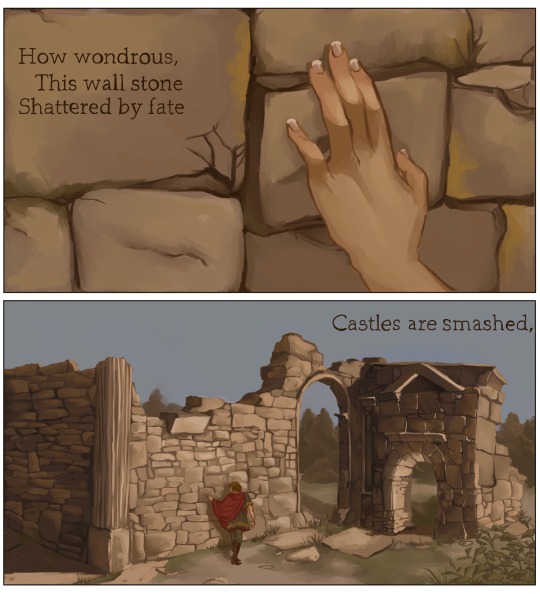



Comic for “The Ruin” a poem written by an unknown author in the 8th or 9th century
How wondrous, this wall stone,
Shattered by fate.
Castles are smashed,
The work of giants, crumbled.
Ruined are the roofs,
Tumbled the towers.
Broken the barred gates.
Frost in the plaster,
Ceilings a-gaping.
Torn away, fallen,
Eaten by age.
#the ruin#history#poetry illustration#roman ruins#historical illustration#digital art#digital painting#artists on tumblr#art#my art#Roman#myth#dark ages#medieval
2K notes
·
View notes
Text

"Ah, look at all the lonely people."
Pulled something real quick for this game, it's eating my brain
#firevenus art#afk merlin#magister merlin#afk journey#afk journey fanart#It's more to a doodle cuz I need to let this idea out#you're born out of the magic itself#< 10 point if you get the ref#God my fate to love this myth of a man from bbc to fantasy medieval rpg game dammit..
193 notes
·
View notes
Text

#hi thinking about how the structure of most of the myths about loki is#'loki fucks around and finds out in the most unnecessarily disproportionate way possible'#and the way I talk about them half the time is basically the medieval nordic equivalent of writing long emotional thinkpieces about fuckin.#tom from tom and jerry
114 notes
·
View notes
Text
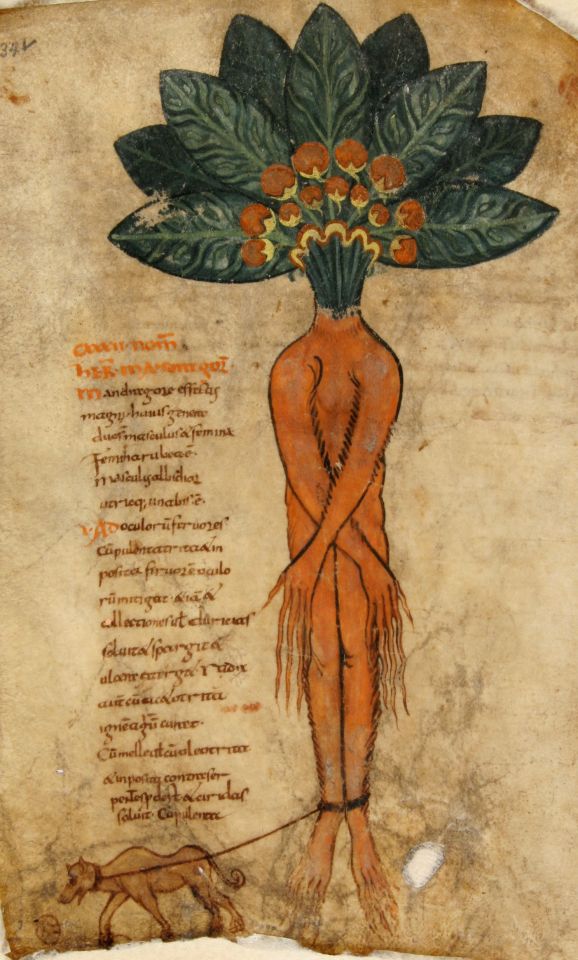
an anthropomorphic mandrake being dug up with the help of a dog tied to its feet/roots
in "pseudo-antonius musa: de herba betonica", latin manuscript, late 9th century
source: Kassel, UB, 2° Ms. phys. et hist. nat. 10, fol. 34v
#this is a very typical depiction of the mandrake#mandrake#mandrake root#alraune#9th century#medieval#medieval art#medieval myths#herbarium#dog#plant#illuminated manuscript
770 notes
·
View notes
Text
The missing Arthurian knight - rediscovered in 2019
Well the title is a slight lie - the missing knight wasn't rediscovered in 2019, it was earlier than that, but he didn't became public until 2019.
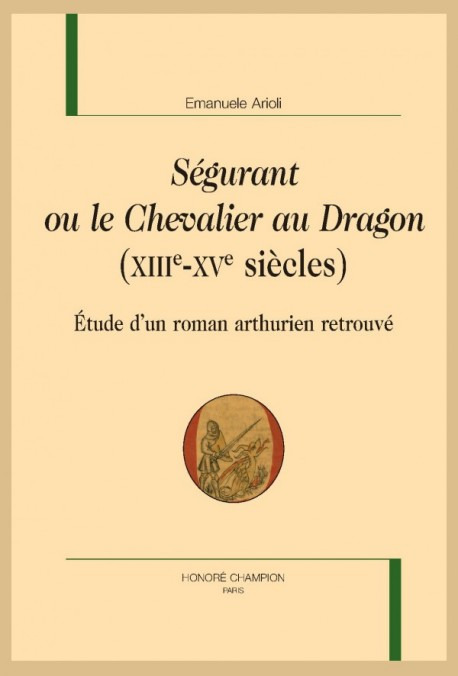
So what's this "missing knight" about? Well as the title says. There was a knight part of the Arthurian myth, and he had been missing ever since the Middle-Ages, and he was only recently rediscovered.
Or rather, to be exact - there was an Arthurian novel centered around a knight that existed and was a famous and well-known part of the Arthurian literature in the Middle-Ages, but that completely disappeared, and was forgotten by culture (as much popular culture as the scholarly one). Until very recently.
This rediscovered novel has been a hot topic of all Arthuriana fans in Europe for a few years now - and yet I do not see much talk about this onto this website, despite Tumblr being a big place for Arthurian fans?
So I will correct this by doing a series of posts about the subject. And this post will be the first one, the introduction post presenting to you "Ségurant, le chevalier au dragon" ; "Segurant, the knight of the dragon". A French medieval novel part of the Arthurian literature (hence the "chevalier au X" title structure - like Lancelot, the knight of the cart or Yvain the knight of the lion from Chrétien de Troyes), the reason this story was forgotten by all medievalist and literary scholars is - long story short - because it never existed in any full manuscript (at least none that survived to this day). It was a complete story yes, with even variations apparently, but that was cut into pieces and fragments inserted into various other manuscripts and texts (most notably various "Merlin's Prophecies").
The novel and the Knight of the Dragon were rediscovered through the work of Emanuele Arioli, who rediscovered a fragment of the story while looking at an old manuscript of a Merlin Prophecies, and then went on the hunt for the other fragments and pieces scattered around Europe, until he finally could compile the full story, that he then published in 2019, at the Belles Lettres publishing house, in 2019.
Arioli reconstructed the text, and translated it in both modern French and Italian for scholarly and professional editions (aka Honoré Champion in France, a reference for universities)...
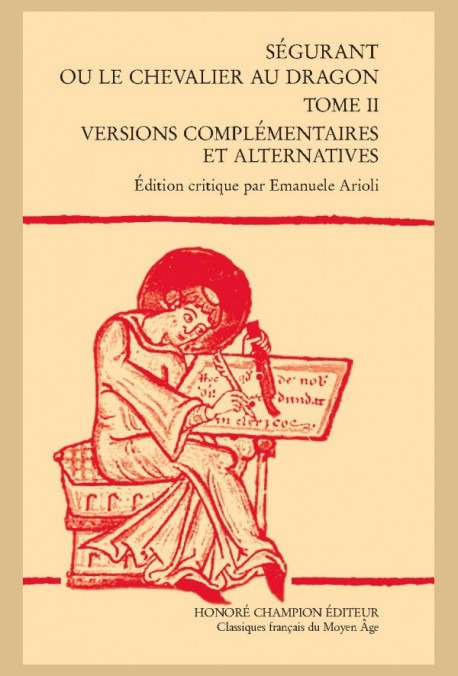
... But also for a more "all public, found in all libraries" edition - the famous 2019 edition at Les Belles Lettres.

And not only that, but he also participated to both a comic book adaptation with Emiliano Tanzillo...

... and an adaptation as an illustrated children novel!

Finally, just a few weeks, the Franco-German channel Arte released a documentary about the reconstitution and content of this missing novel called "Le Chevalier au dragon: Le roman disparu de la Table Ronde". (The Knight of the Dragon - The missing novel of the Round Table). The full documentary is on Youtube in French for those that speak the language, here. And in German here for those who speak German.
Unfortunately there is no English version of the documentary that I know of, nor any English publications of the actual text - just French and Italian. But hey, I'll try to palliate to that by doing some English-speaking posts about this whole business!
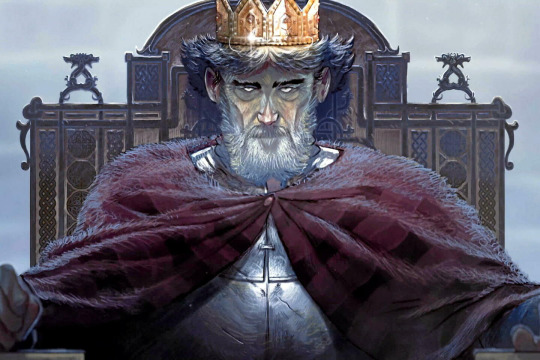
#ségurant#segurant#the knight of the dragon#le chevalier au dragon#arthuriana#arthurian myth#arthurian literature#arthurian novel#discoveries#medieval literature#arthurian legend#arthurian knights#found media#lost media#that people didn't even know was lost
337 notes
·
View notes
Text
We still see a lot of Dionysus, especially in Egypt, long after the emperor Theodosius had made Christianity the official state religion of Rome in 380. In the 400s, 500s, and 600s, Egyptians were still producing textiles like this, which shows Dionysus, holding a bunch of grapes aloft, with a satyr and maenads (his female revelers):
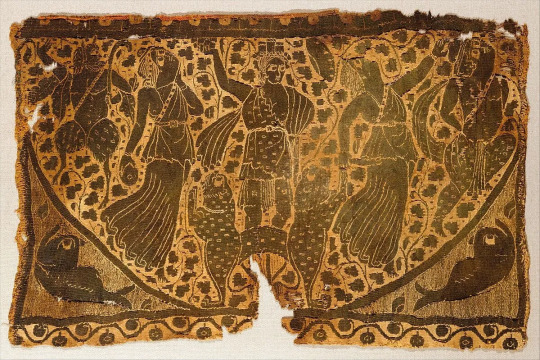
Here’s another, showing the god’s worshippers frolicking:
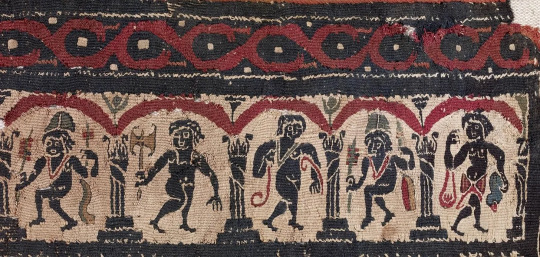
This one shows figures from the Dionysian myths — his tutor, Silenius, Pan, and some of his female worshipers:
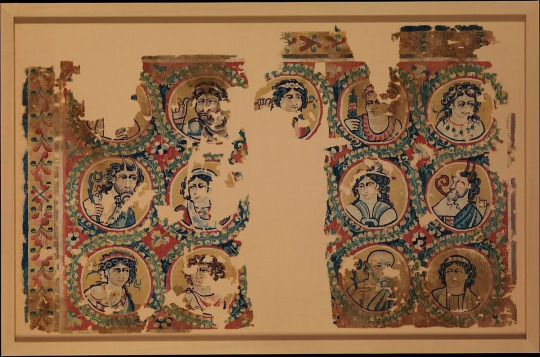
{WHF} {Ko-Fi} {Medium}
401 notes
·
View notes
Text
Folklore Fact - Gryphons/Griffins
Gryphons, griffins, griffons, however you prefer to spell it (I personally use gryphon) - let's talk their folklore and mythology!

(Attic pottery depicting a satyr and a griffin and an Arimaspus from around 375-350 BC, Eretria.)
You probably already know the common popular culture concept of a gryphon: a big, vicious beast that attacks people and probably eats them and/or carries people away to its nest to feed them to its babies. Not much about it has changed in legend, though in a lot of popular culture today, it has seemed to lose its divinity. Gryphons - griffins, whatever you prefer - have quite the robust history, like so many creatures of myth and folklore. Unlike some, however, they have changed very little over time.
Note that this article a general overview of concepts, not a detailed history.
Let's start with etymology, because I just love that stuff. The word "griffin" comes from the Greek word "gryps," which referred to a dragon or griffin and literally meant "curved [or] hook-nosed." Late Latin spelled it "gryphus," a misspelling of grypus, a Latinized version of the Greek (source: https://www.etymonline.com/, one of my favorite websites).
Griffins are said to have the head and wings of an eagle and body of a lion. They may or may not also have pointed ears, depending on the depiction (they more often did, overall, though the griffin of Crete is a notable exception). They were said to guard the gold in the mountains of the north, specifically the mountains of Scythia. The one-eyed Arimaspian people rode on horseback and attempted to steal the griffins' gold, causing griffins to nurture a deep hatred of and hostility toward horses.
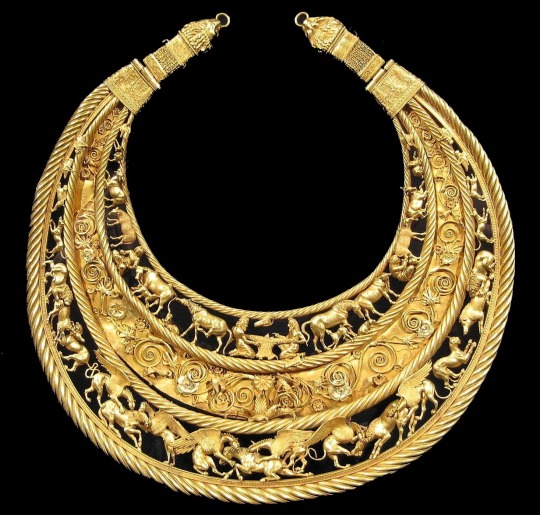
A Scythian pectoral, thought to have been made in Greece, depicting - among other things - griffins slaughtering horses. Griffins really, really hate horses.

The famous griffin in the palace of Knossos at Crete, from the Bronze Age (restored).
Griffins appear in truly ancient civilizations, not only Greece but also ancient Egypt and civilizations to the east, including ancient Sumeria. Griffins were later said to also dwell in India and guard gold in that region, and they continued to appear in art throughout ancient Persia, Rome, Byzantium, and into the Middle Ages throughout other regions such as France; they were depicted in ancient Greece with relative frequency and occasionally of considerable importance.
Griffins appeared in many ancient Greek writings, including Aristeas in the 7th century BC. Herodotus and Aeschylus preserved and continued these writings in the 5th century BC, including lines such as,
"But in the north of Europe there is by far the most gold. In this matter again I cannot say with assurance how the gold is produced, but it is said that one-eyed men called Arimaspoi (Arimaspians) steal it from Grypes (Griffins). The most outlying lands, though, as they enclose and wholly surround all the rest of the world, are likely to have those things which we think the finest and the rarest." Herodotus, Histories 3. 116. 1 (trans. Godley) (Greek historian C5th B.C.), source: https://www.theoi.com/Thaumasios/Grypes.html (a wonderful site)
Physical descriptions of the griffin were not commonplace until some later works, and even then, their appearance wasn't always agreed upon. Even the notion of griffins having wings was sometimes disputed. Some scholars even got pretty wild, claiming griffons had no wings at all but instead skin-flaps that they used to glide. They apparently hated awesome things, so it turns out there were always boring people who thought they knew everything, wanted to explain everything "logically," and generally assume they were the smartest ever while also ruining mystique. They would make great scientists today.
Griffins were, however, often said to be holy in nature. They were referred to as the "unbarking hounds of Zeus" by Aeschylus, who warned others never to approach them. Gryphons were also considered sacred to several gods, including prominently Apollo, who was said to depart Delphi each winter, flying on a griffon (griffin, gryphon, etc, I keep swapping this around, I know; my brain spells it differently because I've read way too many sources), and he also is occasionally depicted as hitching griffins to his chariot in addition to riding one. This was particularly prominent in the cults of Hyperborean Apollo, one of the many endless and fascinating cults of ancient Greece.

Medieval bestiary depiction of a griffin slaughtering a horse.
Even by the Middle Ages, gryphons still hated and slaughtered horses and guarded gold, elements that certainly persisted throughout their legends. They also killed men and carried them away to their nests, similar to the manner in which Aeschylus warned people to stay away from gryphons even back when. We can obviously assume griffons were never cuddly, so that isn't much of a change.
Griffins also did not entirely lose their divine relations even into the Middle Ages. Christianity often used positive portrayals of griffins to represent and uphold certain positive tenets of Christian faith; likewise, they became important symbols of medieval heraldry, used to represent a Christian symbol of divine power, as well as general courage, strength, and leadership, especially in a military sense. The depiction of the griffin as a powerful and majestic creature - killing horses and men or not - throughout its history is no doubt because they are a combination of two beasts often considered noble symbols of bravery, power, and divinity: the lion and the eagle, kings of land animals and birds, respectively.
That's a general overview! As you can see, griffins aren't always so bad, at least not compared to some of the other creatures out there from folklore and myth.
( If you like my blog, be sure to follow me here and sign up for my free newsletter for more folklore and fiction, including books!
Free Newsletter - maverickwerewolf.com (info + book shop) — Patreon — Wulfgard — Werewolf Fact Masterlist — Twitter — Vampire Fact Masterlist — Amazon Author page )
#folklore#mythology#gryphon#griffin#fantasy creature#gryphons#griffins#griffon#folklore fact#folklore thursday#greek myth#myth#persian myth#medival#medieval folklore#history
77 notes
·
View notes
Text

'Green Man' Stone Carving Found In The Moat Of Caerlaverock Castle, Dumfries and Galloway, Scotland
#green man#folklore#archaeology#relic#stonework#stones#castles#moat#medieval#stonemason#Scotland#myth#figure#face
50 notes
·
View notes
Text
Me again! Bringing in some hot gossip about the Welsh Laws of Women. (By which I mean from the laws of Hywel Dda.)
No. No! Don't run away, it's good shit, I promise!

So, the legal majority for a girl was twelve. This is different to a boy. Under Welsh law, they didn't become men until they were 14, and, if they were high-ranking, were fostered out to other nobles, whereas girls were kept at home, hence the 'father's platter.' What's interesting to me is that after she became a woman she was entitled to hold her own property as an unmarried woman and 'go wherever she pleased.'
I realise I am saying that verbatim to what I've highlighted but like think about it!!!! She wasn't bound to her family - except in marriage but I'll get into that - and she legally had the right to go bye byes! Her father didn't rule her life, basically. She's a free spirit.
NOW, the right to land is pretty tricky, on account of different parts of Wales having different customs. You gotta remember that Wales was NEVER really united* under one big fish until AFTER the Normanic Conquest, and even then that took some fuckin doing.
(*Llywelyn ap Gruffudd, Owain Gwynedd, and Llywelyn Fawr are exceptions. That's the House of Aberffraw, bb!)
So, in South Wales, it seems more prevalent to give land to a lady's descendants when there were no men to take up the land. This is far better than in North Wales (and may I just say as a North Walian *clears throat* WHAT THE FUCK?) where basically Salic Law applied which is basically where u gotta give it to a male descendent. Female lineal descendants were excluded. Boo!!!



BUT!!! However, matrilineal bloodlines should not be discounted. Royal women still had claims to the throne that could be used by their descendants to press their claim. Owain Glyndŵr did this. I suspect if u were related to a Welsh lady you could try and do it but, pls, don't use this tumblr post to try and convince the jury. It's on you, bud.
MAWWIAGE. IT'S WHAT BWINGS US TOGETHER.
Now, there are two forms of marriage. Your normal one where your parents pick for you or at the very least gift u to your husbando like in Culhwch and Olwen, and the one where you can ELOPE. Because Welsh law didn't see marriage as a religious thing the sanctity of marriage wasn't in question so, therefore, you could have a little fun and y'know nyoom after your chosen beau. (Gwenllian ferch Gruffudd ap Cynan did this. She's ace.)




The Mabinogi gives us a lot of good shit about the gift of kin stuff. Branwen gets gifted to Matholwch by Bendigeidfran, all fine and dandy. BUT Welsh law states that your relatives - mam, dad, grandads, grandmum's, great-grandad's and grrat-grandmum's - needed to take counsel cuz y'know it's a big fuckin thing, giving somebody in marriage. So, that's why Efnisien is so upset because he wasn't given a say. He thinks he is legally entitled to do so. However, he's only her half-brother so not full-blooded. Therefore, he's unable to have a say because he isn't fully related to her.
(A lot of Welsh law is prevaricated on kin ties.)
Also for all u Rhiannon lovers out there - like me - the Welsh law was on her side when she fought to free herself from Gwawl ap Clud. (Although the badger-in-a-sack game was a bit much.) Welsh law forbade a woman from being married against her will. Yeah, your family could try and capture you and bring you back but like if you'd bonked the lad you could stay. You'd made your choice. Nobody can take that away from you. All that was needed in a personal bestowal was continued cohabitation. *clicks teeth, finger guns.*
Also, there are marriage laws too, but I don't want to clutter up the feed too much, or overly ramble. Suffice to say there's some fun ones!
#arthuriana#welsh mythology#mabinogion#the mabinogion#welsh myth#y mabinogi#the mabinogi#arthurian legend#arthurian mythology#welsh laws#the laws of hywel dda#welsh culture#welsh customs#culhwch ac olwen#culhwch and olwen#pwyll pen annwfn#rhiannon ferch hyfaidd hen#branwen ferch llŷr#bendigeidfran#welsh history#medieval laws#wales
32 notes
·
View notes
Text
uuh passed my thesis defense??
#guess who’s actually gonna sleep for the first time in a week!!#like half my coworkers showed up to support me i was so touched 😭😭#they had the zoom link pulled up in the break room for a watch party lmao#also being actively Christian in the humanities is so hard my God#one of my advisors (philosophy professor) kept asking me these long bait-y kinds of questions that were like#almost trying to get me to like?? denounce Gender as a concept??#because I was talking about how medieval theories of gender hierarchy affect CS Lewis’ work#at one point she was like “obviously he was a misogynist and a chauvinist” mkay#she also asked about the new wave of female-lead myth retellings (which i dislike)#but I think I salvaged my answer??#it was stressful BUT everyone says I did a great job#WEIGHT LIFTED OFF MY SHOULDERS
23 notes
·
View notes
Text


PREORDERS OPEN 🌀
My Cú Chulainn and the Morrígan standees are now available for preorder!
Preorders close September 1st with delivery end of September/early October. I will have a limited quantity available for general release also, but preorders will help me gauge the interest properly, thanks for the support!
Preorder here!
#irish mythology#irish folklore#celtic mythology#amylouioc art#irish myths#cu chulainn#irish#the morrígan#the morrigan#ulster cycle#mythological cycle#medieval irish#medieval literature#an táin#cú chulainn
34 notes
·
View notes